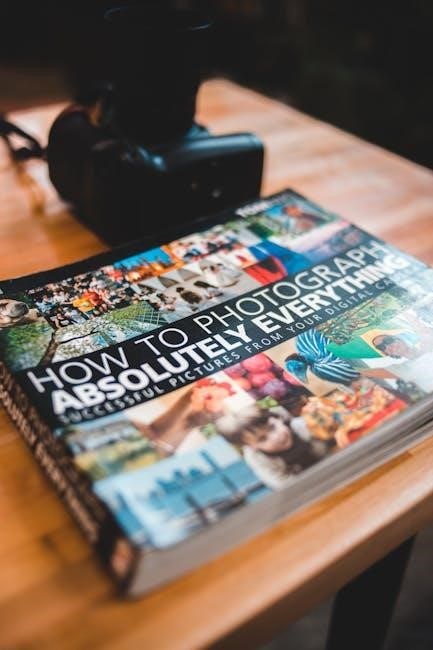f150 tow guide
F150 Tow Guide: A Comprehensive Overview (Updated 12/22/2025)
This guide details F150 towing, covering capacities from 2012-2024, essential equipment, and calculations for safe hauling as of today’s date.
The Ford F-150 has long been a benchmark for towing prowess, consistently offering impressive capabilities across its various model years. Understanding these capabilities is crucial for owners planning to haul trailers, boats, or other substantial loads. Towing capacity isn’t a single number; it varies significantly based on factors like engine choice, axle ratio, cab configuration, and whether the truck is 4×2 or 4×4.
Recent discussions (as of December 22, 2025) highlight concerns about potential decreases in towing capacity for the 2024 models, with some owners reporting a reduction to around 8400 lbs even with the max tow package. Conversely, earlier models, like the 2015 3.5L EcoBoost, and the 2021 2.7 Ecoboost, boast substantial ratings – sometimes exceeding 10,000 lbs – though deciphering the requirements to achieve those ratings can be confusing due to complex Ford towing guides. This guide aims to clarify these nuances, providing a comprehensive overview of F-150 towing capabilities throughout the years.
Understanding Towing Terminology
Before diving into specific F-150 towing capacities, it’s essential to grasp key terminology. Gross Vehicle Weight Rating (GVWR) is the maximum permissible weight of the fully loaded vehicle, including passengers, cargo, and the tongue weight of the trailer. Gross Combined Weight Rating (GCWR) represents the maximum allowable weight of the F-150 and the fully loaded trailer combined.
Payload capacity is the amount of weight your F-150 can carry in its bed and cabin. These ratings are not interchangeable; exceeding any one can compromise safety and vehicle performance. Understanding these ratings, alongside terms like ‘max trailer weight’ and ‘tongue weight’ (typically 10-15% of the trailer weight), is vital. Ford’s towing guides often present this information in charts, categorized by engine, transmission, and wheelbase, which can sometimes be confusing, as noted in recent online discussions regarding the 2.7L EcoBoost’s 10,100 lb rating.

F150 Towing Capacity by Year
This section provides a detailed breakdown of F-150 towing capacities, year by year, from 2012 models through the recent 2024 updates and changes.
2012 F150 Towing Capacities
The 2012 Ford F-150 offered a diverse range of towing capabilities, heavily dependent on configuration. For example, a 145″ wheelbase SuperCrew with the 5.0L engine could achieve substantial towing numbers; However, understanding the specifics requires careful consideration of engine choice, axle ratio, and drivetrain.
Configurations with the 3.5L EcoBoost engine also presented strong towing options, though precise figures varied. Owners seeking to maximize towing potential often consulted the official Ford towing guides for their specific vehicle build. It’s crucial to remember that these capacities are maximums and assume proper equipment and adherence to weight distribution guidelines.
Payload capacity also played a vital role, as it directly impacted the total weight the truck could safely handle. Determining the correct towing setup involved factoring in the trailer’s weight, passengers, and cargo within the F-150 itself. Always prioritize safety and consult official documentation.
2015 F150 Towing Capacity (3.5L EcoBoost)
The 2015 Ford F-150, equipped with the 3.5L EcoBoost engine, delivered impressive towing capabilities. Crew Cab 4WD King Ranch models with a 6.5 ft bed were popular choices for those needing substantial towing power. However, pinpointing the exact capacity required referencing specific configurations and available towing packages.
Generally, the 3.5L EcoBoost F-150s could tow between 9,000 and 12,200 pounds, depending on factors like axle ratio and cab configuration. Properly equipped models, including those with the Max Trailer Tow Package, reached the higher end of this range.
It’s essential to consult the owner’s manual and Ford’s official towing guides to determine the precise capacity for a particular 2015 F-150; Remember to account for payload and adhere to all safety regulations when towing.
2016 F150 Towing Specifications
The 2016 Ford F-150 offered a broad spectrum of towing capacities, largely dictated by engine choice, drivetrain, axle ratio, and cab configuration. Ford provided detailed towing specifications in a comprehensive PDF document for this model year, crucial for owners needing precise data.
Maximum towing capacity for the 2016 F-150 reached up to 12,300 pounds when equipped with the 3.5L EcoBoost engine, a Max Trailer Tow Package, and the appropriate axle ratio. Lower trims and engine options, such as the 3.5L V6 or 5.0L V8, had correspondingly lower maximums.
The official Ford documentation categorized towing data by these variables, allowing owners to quickly identify their truck’s specific capabilities. Always refer to this documentation and the vehicle’s doorjamb sticker for accurate towing information.
2021 F150 (2.7 Ecoboost) Towing Capabilities
The 2021 Ford F-150, when equipped with the 2.7L EcoBoost engine, presented a capable towing solution, though deciphering the exact capacity could be complex due to Ford’s detailed, sometimes confusing, towing guides. Maximum towing for this configuration reached up to 10,100 pounds, but achieving this figure depended heavily on specific vehicle build details.
Factors influencing the 2.7L EcoBoost’s towing capacity included axle ratio, drivetrain (4×2 or 4×4), cab configuration, and the inclusion of the Max Trailer Tow Package. Many online discussions highlighted the lack of clear footnotes explaining how to attain the advertised 10,100-pound rating.
Owners were advised to consult the official Ford towing guide and their vehicle’s specific doorjamb sticker to determine the precise towing capacity for their 2021 F-150.
2022 F150 Towing Guide Overview
The 2022 Ford F-150 towing guide showcased a continuation of the truck’s robust capabilities, offering a wide range of towing capacities depending on configuration. The guide itself served as a crucial resource for owners, detailing technical specifications and available options designed to maximize towing performance and productivity.
Key factors influencing the 2022 F-150’s towing capacity remained consistent with previous years: engine choice, axle ratio, cab style, and the presence of towing packages. Ford provided comprehensive charts outlining these specifications, allowing owners to pinpoint their truck’s exact limits.
The 2022 guide emphasized the importance of understanding Gross Vehicle Weight Rating (GVWR) and Gross Combined Weight Rating (GCWR) for safe and legal towing practices, ensuring drivers operated within the vehicle’s designed parameters.
2024 F150 Towing Capacity – Recent Changes
Recent reviews of the 2024 F-150 towing guide reveal a noticeable decrease in maximum towing capacity for certain configurations, sparking discussion among truck enthusiasts. Specifically, the maximum trailer weight for a 4×4 SuperCrew model equipped with the 3.5L engine has dropped to approximately 8,400 pounds with the max tow package.
While this figure includes an allowance of 300 pounds for passengers, it represents a reduction compared to previous model years. This change has prompted questions regarding Ford’s engineering decisions and the impact on owners who frequently tow heavier loads.
It’s crucial for prospective buyers and current owners to carefully review the 2024 towing guide to understand the specific capacity of their vehicle configuration and ensure safe towing practices.

Factors Affecting F150 Towing Capacity
Engine choice, axle ratio, wheelbase length, cab style, and drivetrain (4×2 or 4×4) significantly influence the F150’s maximum towing capability and performance.

Engine Options and Towing
The F150’s engine dramatically impacts its towing prowess. The 3.5L EcoBoost consistently demonstrates strong towing figures across various years, often achieving higher capacities than the 5.0L V8. For example, a 2015 F150 with the 3.5L EcoBoost offers substantial towing capability. The 2.7L EcoBoost, while efficient, generally provides a lower maximum tow rating – around 10,100 lbs in a 2021 model, though achieving this requires specific configurations.
Recent changes, like those in the 2024 F150, show potential decreases in maximum trailer weight, even with the 3.5L engine, highlighting the importance of checking specific model year specifications. Understanding these engine-specific capabilities is crucial for selecting the right F150 for your towing needs, ensuring both safety and optimal performance. Always consult the official Ford towing guide for precise details.
Axle Ratio and its Impact
The axle ratio significantly influences an F150’s towing capacity and overall performance. A numerically higher axle ratio (e.g., 3.73 or 4.10) provides greater torque multiplication, enhancing towing ability, particularly when hauling heavy loads. Conversely, a lower ratio (like 3.31) prioritizes fuel efficiency but may reduce maximum towing.
Ford’s towing specifications consistently demonstrate how different axle ratios affect capacity within the same engine and configuration. The 2016 F-150 towing specifications clearly illustrate this relationship. Choosing the appropriate axle ratio depends on your typical towing needs; frequent heavy hauling necessitates a higher ratio. It’s vital to consult the official towing guide for your specific F150 model year and engine to determine the optimal axle ratio for your intended use, maximizing both capability and efficiency.
Wheelbase and Towing Performance
An F150’s wheelbase plays a crucial role in towing stability and overall handling. Longer wheelbases generally offer improved stability when towing, reducing sway and providing a smoother ride. This is because a longer wheelbase distributes the trailer’s weight over a larger area, minimizing the impact of external forces.
The 2012 F150 towing capacity chart highlights variations based on wheelbase length; a 145″ wheelbase SuperCrew, for example, will have different ratings than a shorter wheelbase model. While longer wheelbases enhance stability, they can also slightly reduce maneuverability. Therefore, selecting the right wheelbase involves balancing towing needs with everyday driving considerations. Always refer to Ford’s official towing guides for specific capacity figures related to your F150’s wheelbase and configuration.
Cab Configuration and Towing Limits
The cab configuration of your F150 – Regular, SuperCab, or SuperCrew – directly impacts its towing capacity. This is primarily due to the differing weight of each cab style and its effect on payload capacity. A heavier cab reduces the available payload, which in turn limits the maximum trailer weight you can safely tow;
For instance, the 2012 F150’s towing charts demonstrate how a 145″ wheelbase SuperCrew 5.0L model has specific towing limits compared to other configurations. SuperCabs generally offer a slightly higher payload and towing capacity than SuperCrew models due to their lighter weight. Always consult the official Ford towing guide for your specific year and cab configuration to determine the precise towing limits. Understanding these limits is crucial for safe and legal towing practices.
4×2 vs. 4×4 Towing Differences
The choice between a 4×2 (two-wheel drive) and 4×4 (four-wheel drive) F150 impacts towing capacity, though not always dramatically. Generally, 4×4 models exhibit a slightly lower maximum towing capacity compared to their 4×2 counterparts. This reduction stems from the added weight of the four-wheel drive components – the transfer case, front differential, and associated hardware.
This increased weight reduces the available payload, directly influencing the maximum trailer weight. However, the benefits of 4×4 – enhanced traction and control, particularly on challenging terrain or slippery surfaces – can be invaluable when towing. While a 2024 F150 4×4 might show a decrease in maximum tow capacity (around 8400 lbs in some configurations), the improved stability can outweigh this difference for many users. Always prioritize safety and consider your typical towing conditions.

Essential Towing Equipment for Your F150
Proper towing requires a hitch, brake controller, weight distribution system, and correctly installed wiring for trailer lights, ensuring safety and control.
Tow Hitch Types and Selection
Choosing the right tow hitch for your F150 is crucial for safe and effective towing. Several types are available, each designed for different weight capacities and towing needs. Receiver hitches are the most common, categorized by their opening size – 1 ¼ inch, 2 inch, and 2 ½ inch. A 2-inch hitch is generally sufficient for most F150 owners, offering a good balance between strength and versatility.
For heavier loads, a 2 ½ inch hitch is recommended. Beyond receiver hitches, there are also gooseneck and fifth-wheel hitches, primarily used for exceptionally heavy trailers like large RVs or equipment. These require professional installation and modifications to your F150’s bed. When selecting a hitch, always consider the trailer’s weight, tongue weight, and the F150’s towing capacity. Ensure the hitch’s weight rating exceeds these figures for a safe towing experience. Don’t forget to check for compatibility with your specific F150 year and model.
Trailer Brake Controller Installation
Installing a trailer brake controller is paramount when towing trailers exceeding a certain weight with your F150, ensuring safety and control. Most modern F150s require an aftermarket controller, though some may have pre-wiring. Installation typically involves connecting the controller to the vehicle’s electrical system – often utilizing the factory brake light wiring and a 12V power source.
Controllers mount inside the cab, usually near the steering wheel, providing easy access to adjust braking force. Proper installation requires careful wiring and secure mounting. Many owners opt for professional installation to guarantee correct functionality and avoid electrical issues. After installation, thorough testing is vital. Verify the controller activates the trailer brakes correctly and that the adjustment settings are appropriate for the trailer’s weight and load. A properly functioning trailer brake controller significantly enhances towing safety and reduces strain on your F150’s braking system.

Weight Distribution Hitch Benefits
A weight distribution hitch is crucial for F150 owners towing heavier trailers, significantly improving towing stability and safety. These hitches redistribute trailer weight across all axles of the towing vehicle and trailer, reducing rear-end sag and improving steering control. Without one, excessive weight on the rear axle can lead to poor handling, sway, and reduced braking effectiveness.

Weight distribution hitches work by using spring bars that transfer a portion of the trailer’s tongue weight to the front axle of the F150. This restores a more level ride height and optimizes suspension performance. Benefits include enhanced braking, reduced tire wear, and a more comfortable ride. Properly adjusted, a weight distribution hitch minimizes trailer sway, especially in windy conditions or during emergency maneuvers. It’s a worthwhile investment for anyone regularly towing substantial loads with their F150, maximizing control and confidence on the road.
Wiring Harnesses for Trailer Lights
Proper trailer light functionality is paramount for safety, and F150 wiring harnesses provide a reliable connection to your trailer’s lighting system. Factory-installed wiring is often limited, necessitating the use of aftermarket harnesses for various trailer light configurations – including incandescent, LED, and even more complex setups.
These harnesses plug directly into the F150’s existing electrical system, avoiding the need for splicing or cutting wires, which can void warranties or create electrical issues. Available in 4-pin, 5-pin, 6-pin, and 7-pin connectors, selecting the correct harness depends on the trailer’s requirements. Installation is typically straightforward, often requiring only basic hand tools. A correctly installed wiring harness ensures your trailer’s brake lights, turn signals, and running lights operate seamlessly with your F150, complying with legal requirements and enhancing visibility for all road users;
![]()
Calculating Your F150’s Towing Capacity
Determining your F150’s true towing capacity requires understanding GVWR, GCWR, and payload limits – crucial factors for safe and legal towing operations.

Gross Vehicle Weight Rating (GVWR)
The Gross Vehicle Weight Rating (GVWR) represents the maximum permissible weight of your fully loaded F-150. This includes the vehicle’s weight itself, passengers, cargo, and any added equipment like a hitch. Exceeding the GVWR can compromise handling, braking performance, and potentially damage the vehicle.
You can find your F-150’s specific GVWR on a sticker typically located on the driver’s side doorjamb. It’s a critical number when calculating your towing capacity, as it directly impacts how much weight you can safely add to the truck. Remember, GVWR isn’t just about towing; it’s about the total weight the vehicle is designed to handle.
Properly distributing weight within the truck is also essential to stay within the GVWR limits. Uneven loading can create instability and affect the vehicle’s center of gravity. Always prioritize safe weight distribution alongside staying under the GVWR.
Gross Combined Weight Rating (GCWR)
The Gross Combined Weight Rating (GCWR) is the maximum allowable weight of your F-150 and its fully loaded trailer. Unlike GVWR, which focuses solely on the truck, GCWR considers the combined weight of both vehicles. This rating is crucial for safe towing, as exceeding it can severely strain the drivetrain and braking systems.
Finding your F-150’s GCWR requires consulting the owner’s manual or a towing guide specific to your truck’s year and configuration. It’s often higher than the GVWR, but it’s still a firm limit. Calculating GCWR involves adding the truck’s weight (with passengers and cargo) to the trailer’s weight (fully loaded).
Always ensure the combined weight remains below the specified GCWR to maintain control and prevent potential mechanical failures during towing. Prioritizing GCWR alongside GVWR and payload capacity is vital for responsible and safe towing practices.
Payload Capacity Considerations
Payload capacity represents the maximum weight your F-150 can carry within the truck bed and cabin – passengers, cargo, and the tongue weight of your trailer all contribute to this. It’s a frequently overlooked aspect of towing, yet critically important for safety and handling.

Exceeding payload capacity compromises the truck’s stability and braking performance. Tongue weight, typically 10-15% of the trailer’s total weight, significantly impacts payload. Remember to factor in the weight of all passengers, cargo in the cab and bed, and any added accessories.
Your F-150’s payload capacity is listed on the driver’s side doorjamb sticker. Always stay well within this limit, even if your truck has ample towing capacity. Prioritizing payload ensures a balanced and controlled towing experience, preventing dangerous situations on the road.
















































































